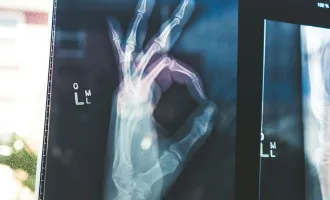Grateful For a Culture of Feedback
An unexpected advantage of introducing a new curriculum has been the fervent solicitation of student feedback. Through a renewed emphasis on feedback and change, first-year students will not only cross Bridges, we will help build it.
Beginning in August, UCSF faculty and staff have sought out student opinion through a variety of sustained and novel approaches. There have been weekly lunch hours with our professors, student advisory meetings with deans, and expanded student representation on our School of Medicine governance committees. The goal has been to learn about the strengths and weaknesses of Bridges — from technology resources to course content — from all of the students.
This is in stark contrast to previous years where end-of-course evaluations, along with student representation by the interested few, were the primary channels for student feedback.
Along with greater inclusivity that gives voice to the diversity of opinions that exist within our class, the weekly dialogue through feedback sessions in Bridges brings other benefits. Unlike the previous methods which targeted curricular improvement for future years, the in-person discussions in Bridges have led to problem solving in real time.
One particularly welcome change came during our recent “Airway, Blood, and Circulation” (ABC) course. With Bridges, this course was shortened from its original 12-week duration down to 7 weeks. The compressed timeframe and addition of new curricular elements led to unexpected challenges. The feedback was clear – we were overwhelmed.
The administration and faculty validated our concerns with action. The result was a much needed rescheduling of concurrent Core Inquiry Curriculum (CIC) sessions to allot greater time to master ABC coursework.
Despite the success of these immediate changes, there is confusion about the feedback process. What student feedback ultimately leads to these real-time improvements? Who has the deciding power to make these changes? More transparency is needed about what happens following varied student input.
One solution is creating a more systematic process for acting on immediate feedback. Students should be given the opportunity to comment on proposed improvements before they are enacted. This would help not only increase transparency but also identify the curricular changes that would be most impactful.
Another issue has been integrating feedback from different parts of the curriculum. Feedback sessions are often separated by element (i.e., CMC, Foundational Sciences, and CIC), with each having its own goals and demands. Allowing students to voice opinions on the experience as a whole will be key to refining a truly integrated curriculum.
Nonetheless, the willingness of our administration to adapt in response to student feedback has been crucial to Bridges thus far — and real-time student feedback has only been possible given the ongoing dialogue with our faculty each week. While weekly in-person feedback sessions may not be sustainable in the future, I would recommend that they continue to be incorporated in some form even once Bridges has been established.
The new curriculum has already begun to create a culture of change through inclusive and regular feedback. As the first Bridges students, it is our responsibility to preserve this culture to ensure real-time continuous improvement is a part of medical education for all future UCSF students.


